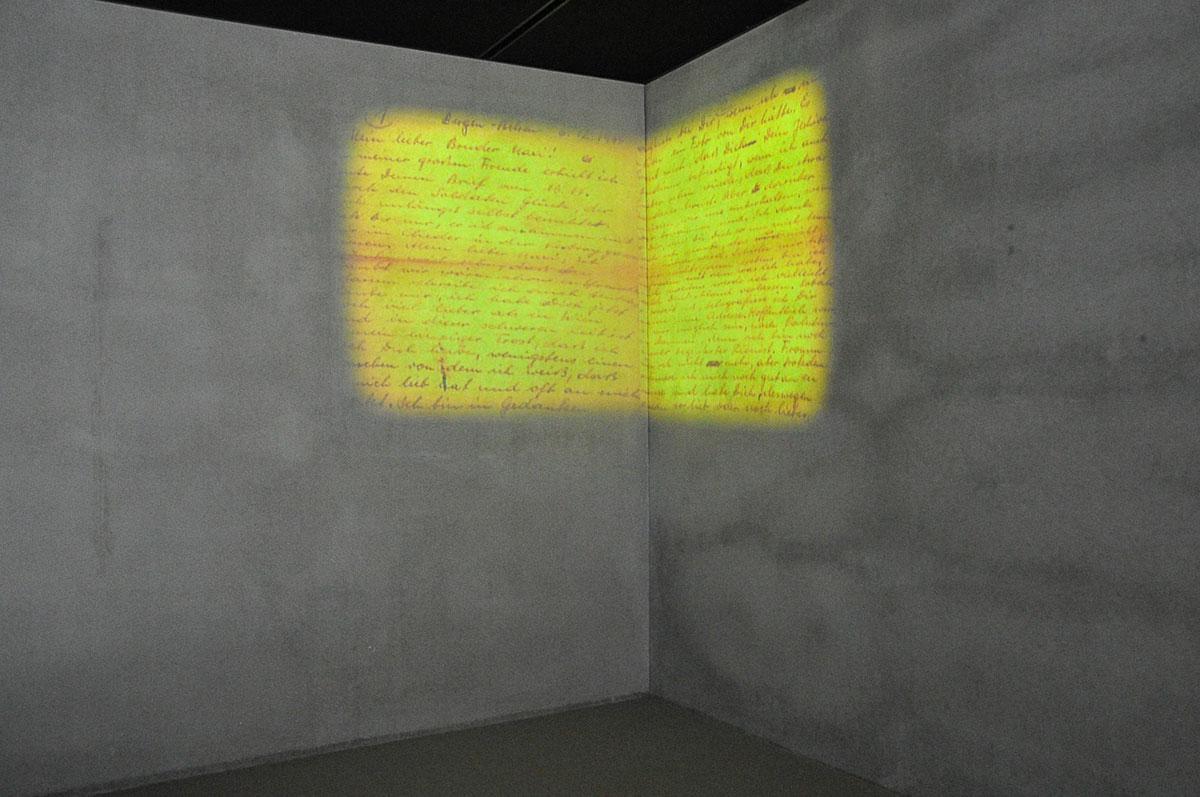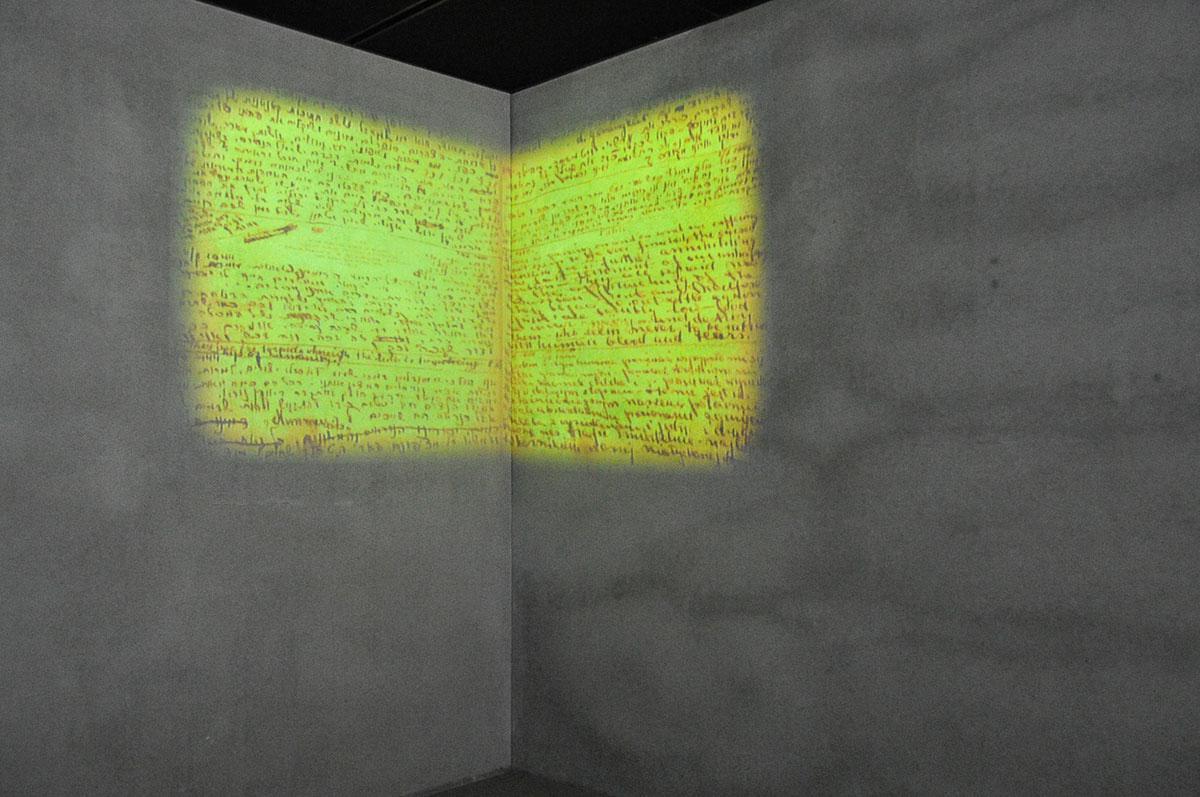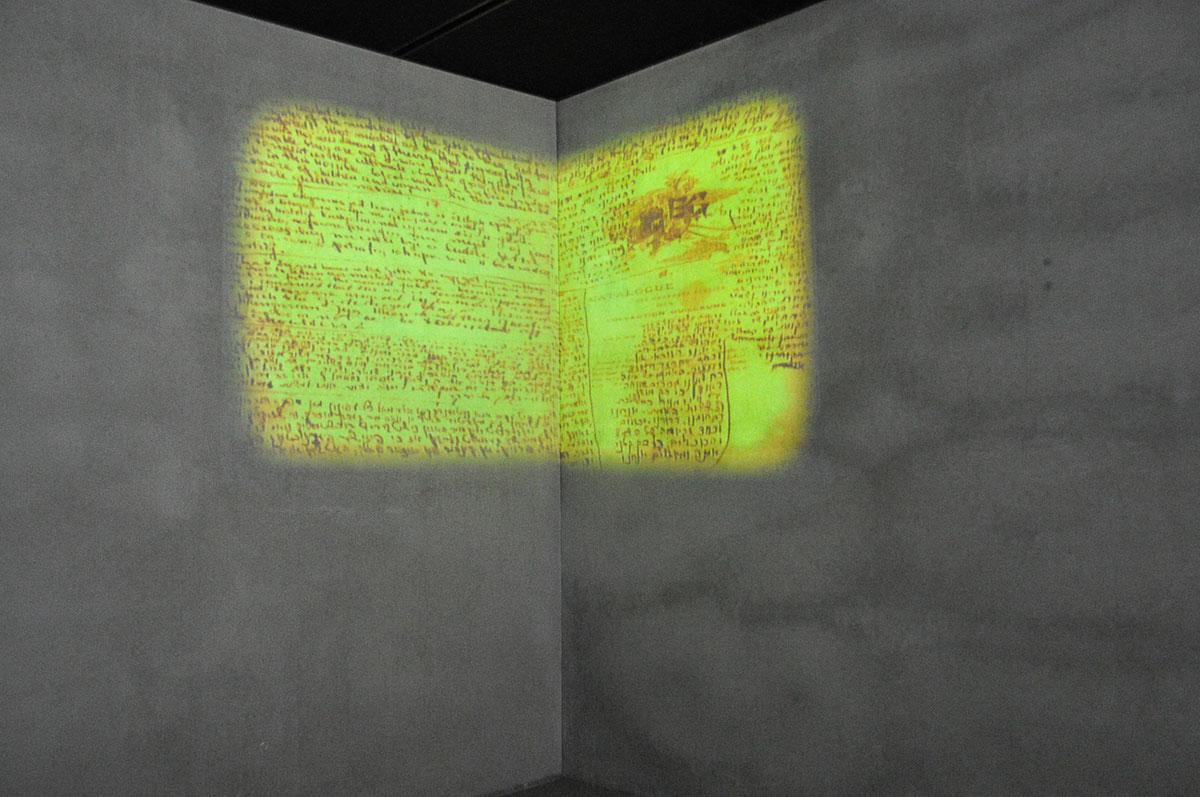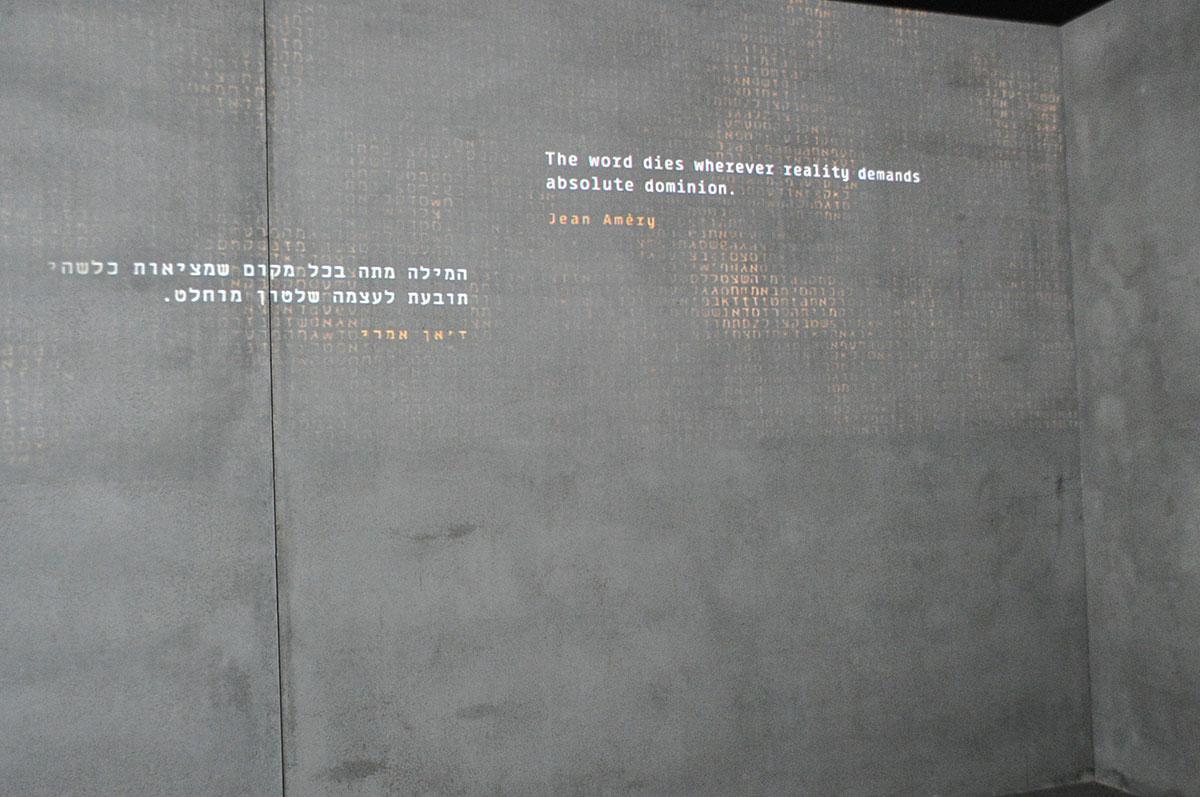







Sunday to Thursday: 09:00-17:00
Fridays and Holiday eves: 09:00-14:00
Yad Vashem is closed on Saturdays and all Jewish Holidays.
Entrance to the Holocaust History Museum is not permitted for children under the age of 10. Babies in strollers or carriers will not be permitted to enter.








The galleries within the museum conclude with a final exhibition dedicated to an artistic piece that encapsulates Jewish contemporary responses to the horrors and imminent death that was then a daily reality.
The video art display, designed by renowned artist, Uri Tzaig, gives expression to individual responses and reactions to the Holocaust, through excerpts from diaries, poetry, and letters. The pieces, all be genuine works from the Holocaust period, are shown in both Hebrew and English.
In one corner of the gallery an image of a book with continually turning pages shows changing calligraphies of individuals that chose to express their hopes, fears, and dreams through the medium of the written word. An original piece of music accompanies the visual art in this gallery.
With its interpretative works of art, this is the only gallery within the Holocaust History Museum that is not created around a historical narrative. It gives expression to the voices of the majority of a community that did not survive to tell their tale, and encourages visitors to remember each victim as an individual with a unique existence.
Uri Tzaig, the artist, was born in 1965 in Kiryat Gat, Israel. He graduated in 1990 from the School of Visual Theatre in Jerusalem. He has been featured in solo exhibitions across Europe, the United States and Israel.

Thank you for registering to receive information from Yad Vashem.
You will receive periodic updates regarding recent events, publications and new initiatives.

"The work of Yad Vashem is critical and necessary to remind the world of the consequences of hate"
Paul Daly
#GivingTuesday
Donate to Educate Against Hate


Worldwide antisemitism is on the rise.
At Yad Vashem, we strive to make the world a better place by combating antisemitism through teacher training, international lectures and workshops and online courses.
We need you to partner with us in this vital mission to #EducateAgainstHate
The good news:
The Yad Vashem website had recently undergone a major upgrade!
The less good news:
The page you are looking for has apparently been moved.
We are therefore redirecting you to what we hope will be a useful landing page.
For any questions/clarifications/problems, please contact: webmaster@yadvashem.org.il
Press the X button to continue



